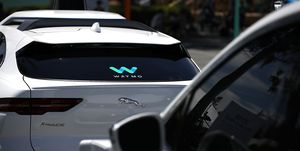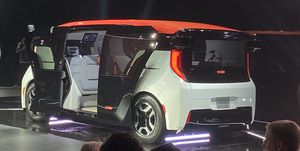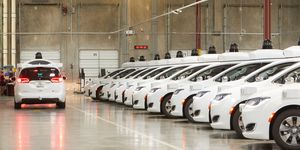- Autonomous-vehicle research is costing billions, and so far there has been very little short-term reward for it, says tech-news website The Information, relying on data supplied from people involved.
- Waymo has spent the most, with an estimated $3.5 billion used to finance its R&D.
- The first self-driving cars will likely be robo-taxis, which are unlikely to create a financial windfall.
Driving is terrific. Commuting is horrible. The self-driving-car scenario I think we can all get behind is to have a vehicle that takes you to work while you catch up on your emails, nap, or watch the latest episode of Fastest Car on Netflix. Then, when you’re not trapped in gridlock, you take the wheel.
Making that relaxing ride a reality is a huge technological hurdle that’s saddled with an astronomical price tag. According to a recent report by tech website The Information, the combined outlay of cash by OEMs, startups, and established companies is $16 billion. To put that monstrous number into perspective, 16 billion seconds is more than five years. If you had a baby and started counting on the day it was born, it would be hassling you for finger-painting supplies and juice boxes before you finished.
Cashwise, we wondered what interesting things we could have purchased instead with that money that was invested in in robots.
If we decided to use all that money to buy a bunch of Ford F-150s ( starting at $30,090), we would walk away with 531,738 trucks. That’s over half of Ford’s total 2019 F-series sales of 896,526. Plus we would have the best contractor fleet in the country.
That new mid-engine Corvette that’s supposed to start at $60,000? The Car and Driver staff and a few hundred thousand of our best friends would have their pick of 266,666 new Vettes. We would corner the market without dipping into our 401(k) or kid’s college fund.
If you got the money, you might as well flaunt it with a Lamborghini Aventador SVJ roadster. The version we drove late last year, with all the carbon bits and a $6400 gas-guzzler charge, was priced at $667,661. For that $16 billion, we would take home 23,964 of these beauties. Sure, Lamborghini said they were only making 800, but I’m sure they’d make an exception for us and our self-driving-car cash and maybe throw in a few cases of Axe body spray.
Finally, we could rescue 627,327 dogs if we used that money to buy up all the Subaru Foresters (starting at $25,505)—although we might stop at 500,000 Subies and use the rest of the money to buy a town for all those puppers to frolic and live in.
The point is that it’s very expensive to make self-driving a reality, and when it does happen, these companies are going to spend years trying to pay off the research and development that’s needed for a robot to chauffeur you around town. If you look at Uber and Lyft right now, their ride-share business plans don’t actually produce a profit. Robo-taxis could reduce the cost of each ride in the future. But that’s a ways off, and it’s going to be quite a while before a car picks you up and drives you to your destination without any human involvement, whether in the car waiting for something to go wrong or controlling the vehicle remotely.
Waymo, the self-driving moonshot from Alphabet (a.k.a. Google’s parent company), has spent about $3.5 billion testing self-driving Chrysler Pacificas in Silicon Valley and Phoenix. It has a “self-driving” ride-hailing service. No one is at the wheel, but it’s monitored remotely, and there’s a chase vehicle in case the van gets confused and a human has to leave the chase car and get in the van to take over.
Waymo does about 1500 rides a month in Arizona charging pretty much what Uber does. So it’s not exactly raking in the dough.
Right now, autonomous research is like going to a really expensive college with a master’s program and knowing that you’ll be getting a minimum-wage job to pay off your debt for the first decade out of school. Companies need deep pockets and realistic expectations to make this happen.
But someday, maybe, we’ll be able to ride to work without dealing with traffic in an autonomous vehicle. That’s almost worth the price tag of nearly 24,000 Lamborghinis. Almost.
Source: Motor - aranddriver.com






